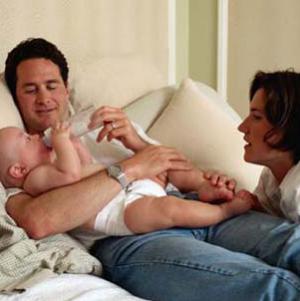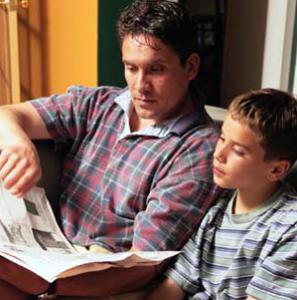
©iStockphoto.com/Catherine Yeulet
There are different types of family structures, including the nuclear family above.
Despite the changing lifestyles and ever-increasing personal mobility that characterize modern society, the family remains the central element of contemporary life. Families offer companionship, security, and a measure of protection against an often uncaring world. But family structure, like society at large, has undergone significant changes in the years since World War II. While the nuclear family -- with Dad, Mom, and offspring happily coexisting beneath one roof-remains the ideal, variations in family structure are plentiful -- and often successful. Whatever your particular family situation, it will have tremendous influence upon your baby's happiness, development, and future. In this article, we will examine all of the many variations of the family structure and its inherent dynamics over the following sections:
- The Nuclear Family
The Nuclear Family is traditionally thought of the parents and the siblings. Though this is the most basic family arrangement, it also rife with complexities. One thing parents much consider is whether to have multiple children. This question raises a host of others, such as, the effect of being the oldest, youngest, and middle child. We will also discuss only children and children who are much older than their siblings. Finally we will talk about how to form strong family bonds.
- The Extended Family
The extended family refers to grandparents, aunts, uncles, and cousins. A strong relationship with your extended family can be just as rewarding as close ties inside the nuclear family. However, building those bonds inside the extended family can be a little more difficult because, obviously, everyone does not live under the same roof. In this section, we offer some suggestions for building a close extended family.
- Working Parents
The decision to go back to work can be a tough one to make for new parents. Naturally, the financial stability of a regular paycheck can take a lot of pressure of your household. Then again, missing your child's first encounters with the world cannot be replaced. Each family must learn how to make this difficult decision for themselves, but on this page you will find some advice for weighing the pros and cons. We will also talk about corporate benefits for new parents and how to make the time you have with your child count.
- Single Parents
Numerous extenuating circumstances can result in a single parent. Traditionally, single parents are thought to be a product of a divorce, but a widower or a mother who had never been married can also be a single parent. Regardless of the causes, single parents face an uphill battle. On this page, we will offer some advice for dealing with an ex-spouse and a child who misses their other parent. While being a single parent is difficult, it can be just as rewarding a traditional, nuclear family.
- Older Parents
Parents who have children later in life face several advantages and disadvantages. On the plus side, they are most likely more financially stable, secure in their job and home, and clear about what they want. On the other hand, they probably have less energy than their younger counterparts and the situation will only be more pronounced as their child matures. On this page, we will lay out all of the positives and negatives to help you make the most informed decision possible.
- Much Older Siblings
If you have another child many years after your first born, your new baby may have three parents. A much older sibling can help watch, mentor, and care for your new baby. Of course, not every big brother or sister will want to embrace this role. On this page, we will examine the pros and cons of much older siblings.
- Younger Parents
Parents who have children in their teens face a variety of problems. First, there is the social stigma attached to have a child at such an early age. Without the support of your family and friends, the new parents will most likely not get the financial and emotional support they need to bring a child into the world. As a result, teen parents have difficulty going to college and finding satisfying careers. On this page, will explore all aspects of this difficult situation.
- Stepfamilies
In past generations, stepfamilies were uncommon and most people did not know how to relate to them. Now, as the stigmas against divorce and remarriage continue to dissolve, more and more stepfamilies are coming together. While it's never easy to merge two families together, stepfamilies can be an opportunity to forge new, lasting, loving bonds. On this page, we will offer some advice for relating to your new family, and for smoothing out the potential conflicts that will inevitably arise. We will also discuss the subject having children once you've remarried into a stepfamily. No one said it would be simple and easy.
- Adoption
Adopting a baby can be very difficult. There are long -- and sometimes embarrassing --probes into your life and home to judge your potential ability as a parent. There are also many different types of adoption to consider. You can adopt through an agency, chose private adoption, foreign adoptions, open adoptions, or independent adoptions. Don't worry -- we'll explain all of the options to you. Unfortunately, when you take your new baby home, your challenges are just beginning. On this page, we will explore all aspects of adoption and what to do as your adopted child grows.
Advertisement









